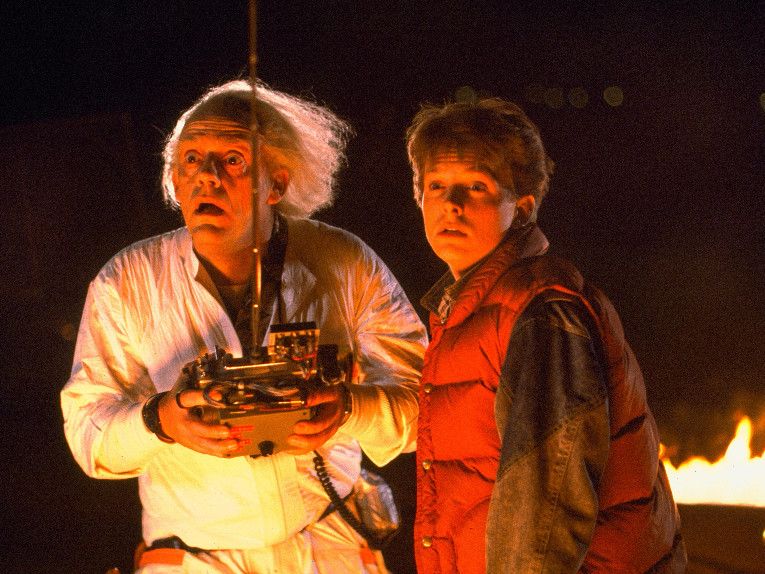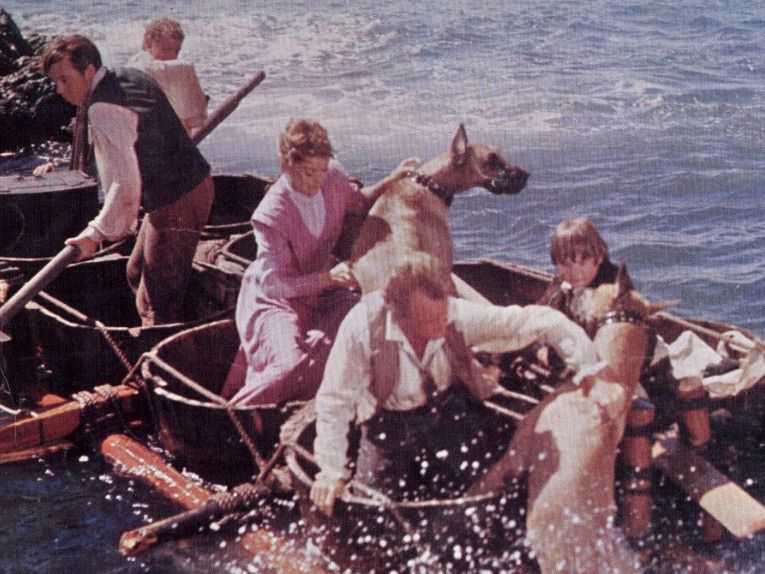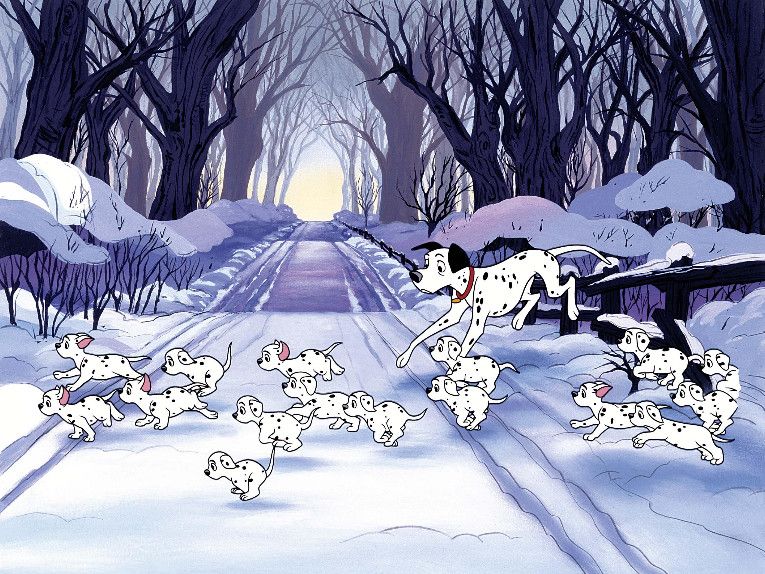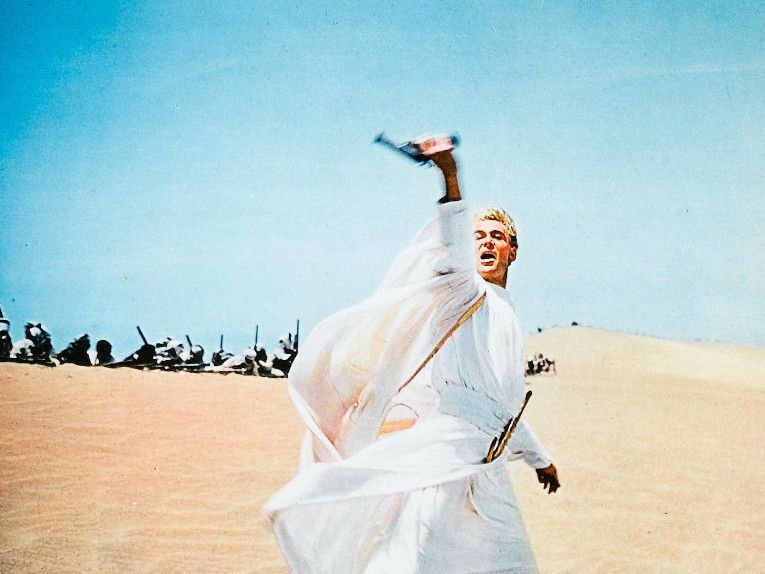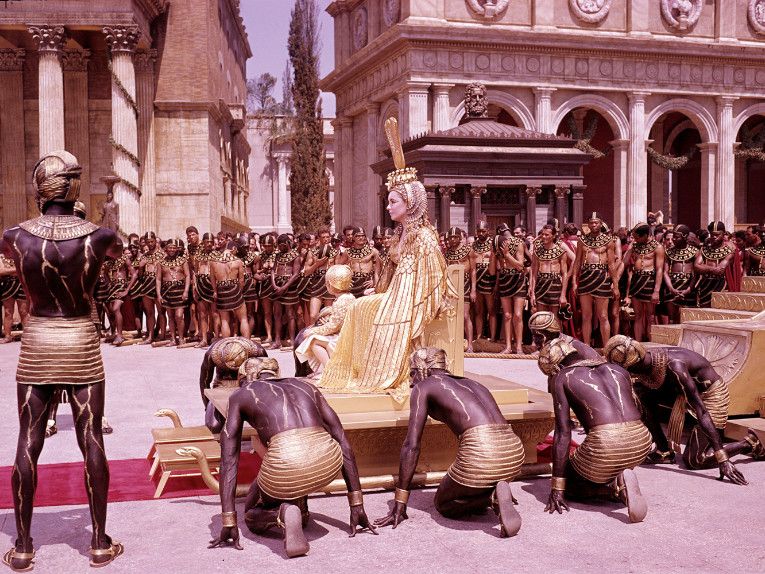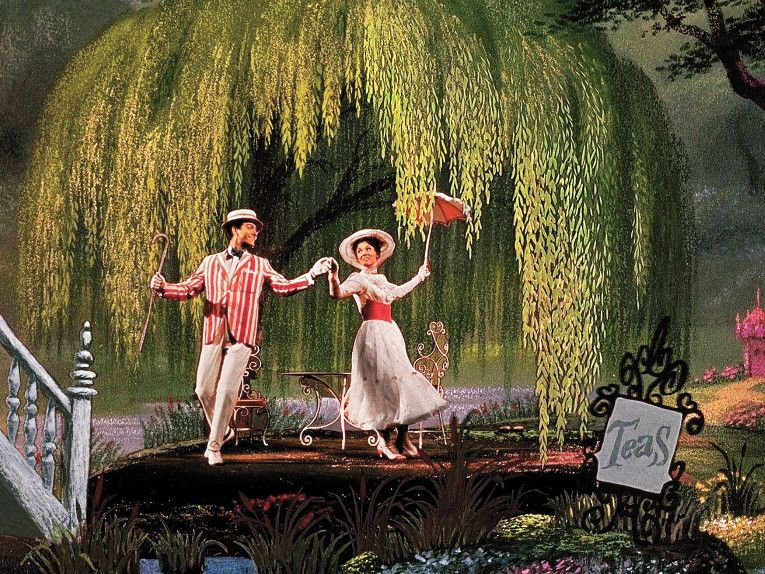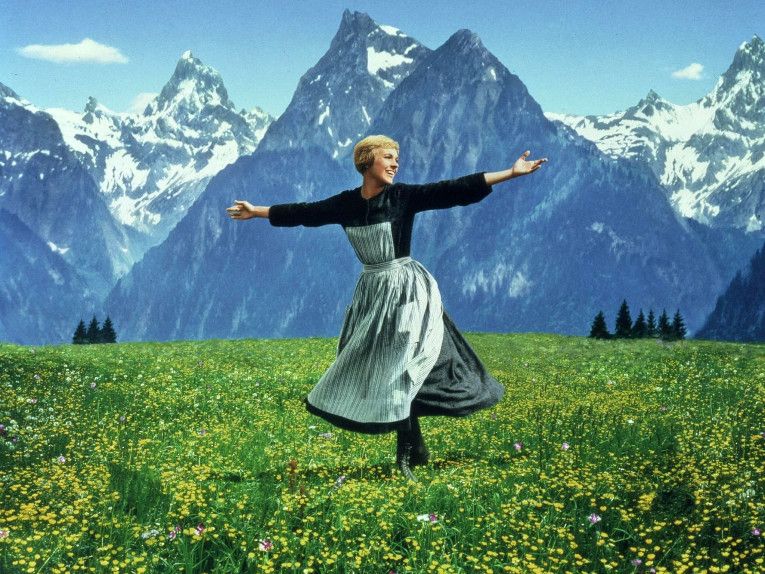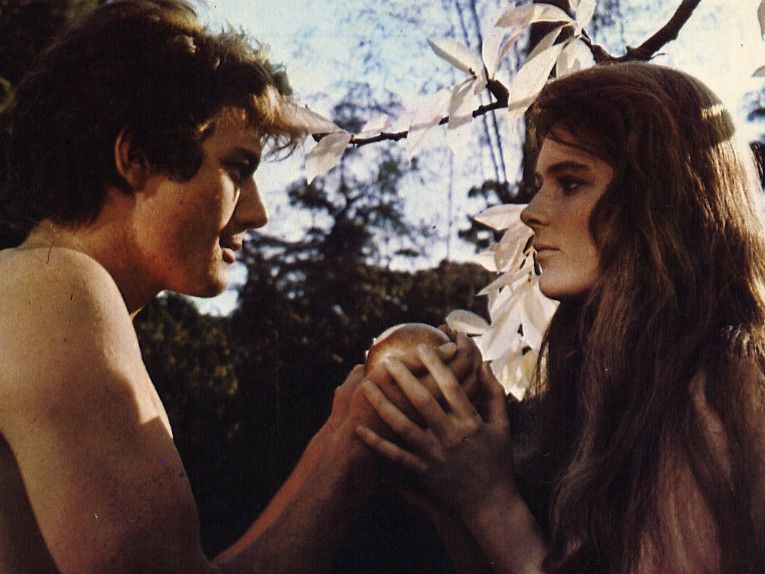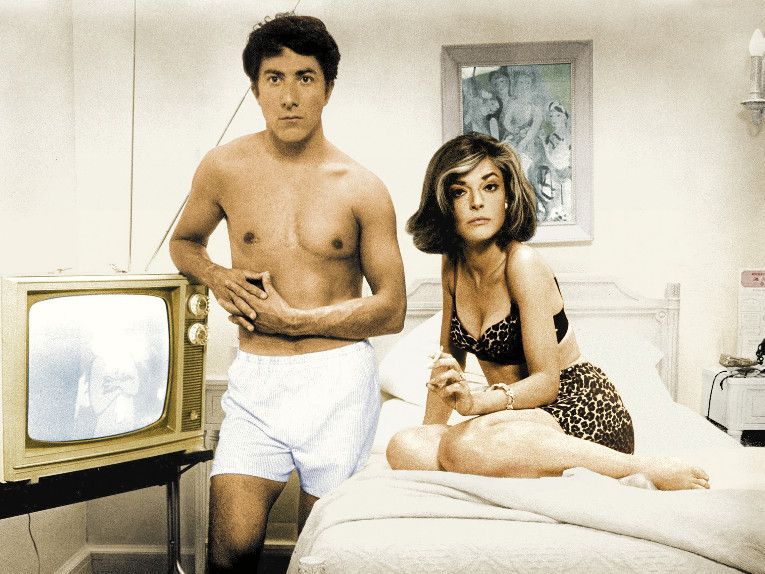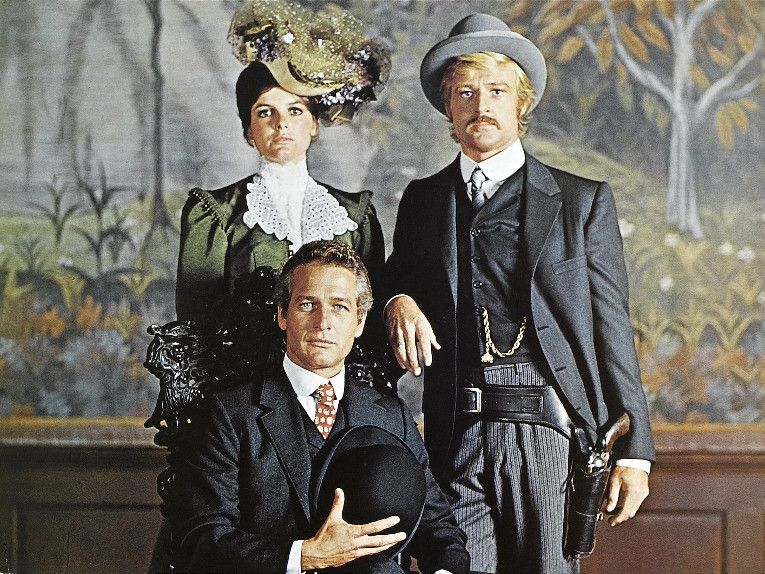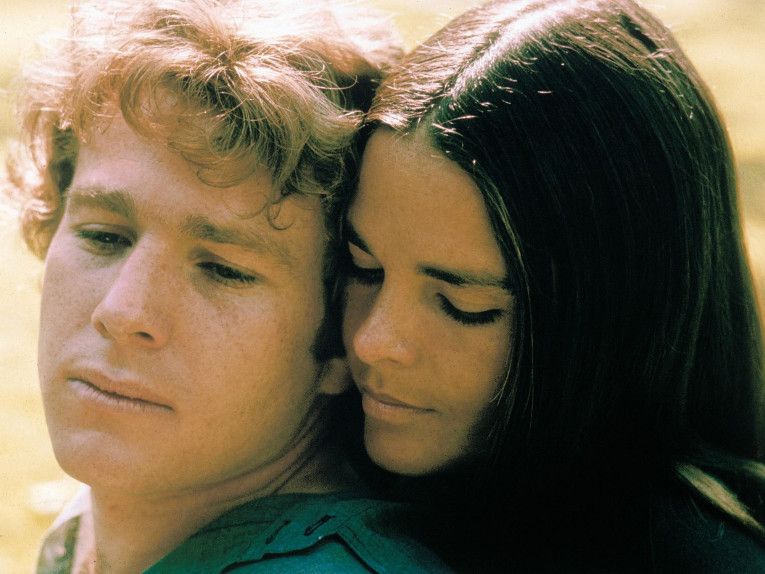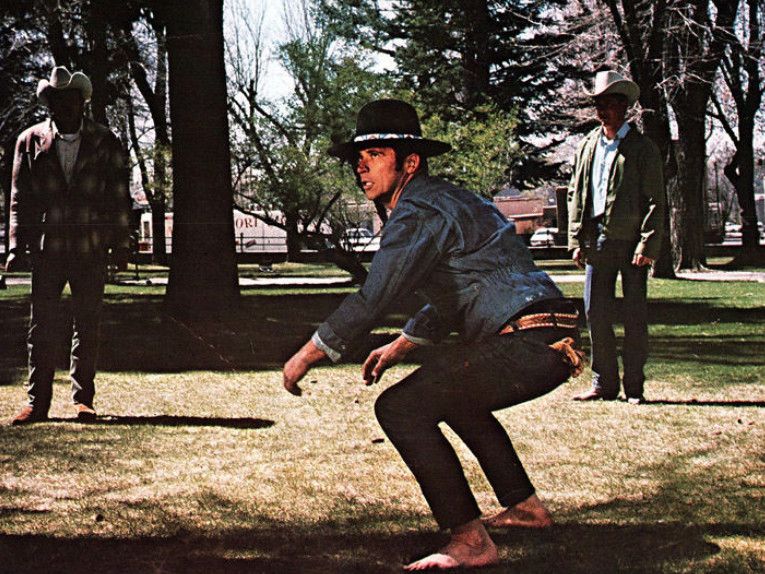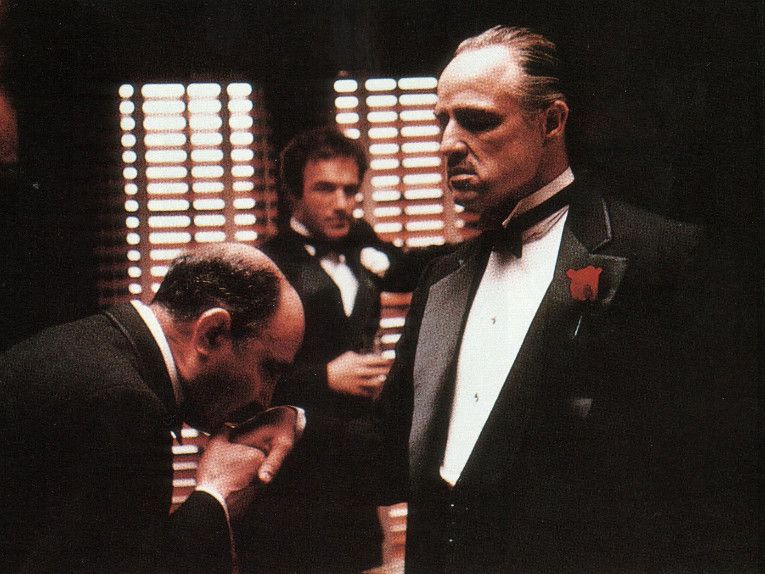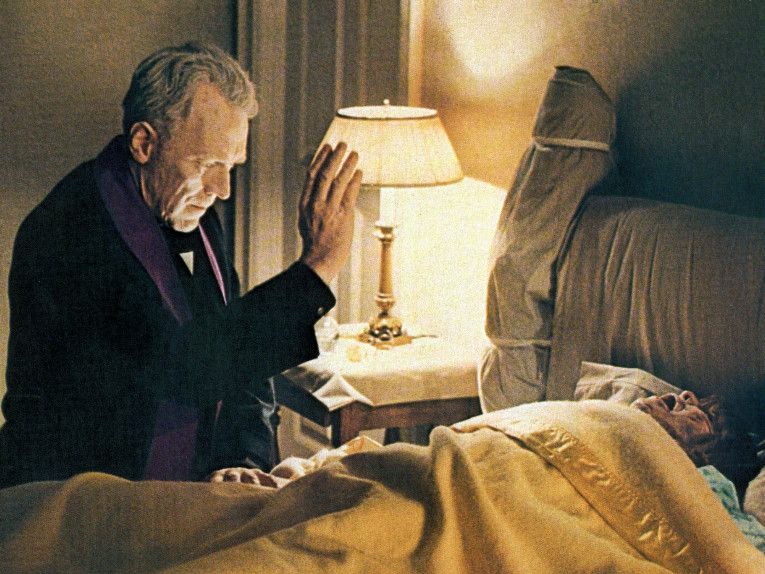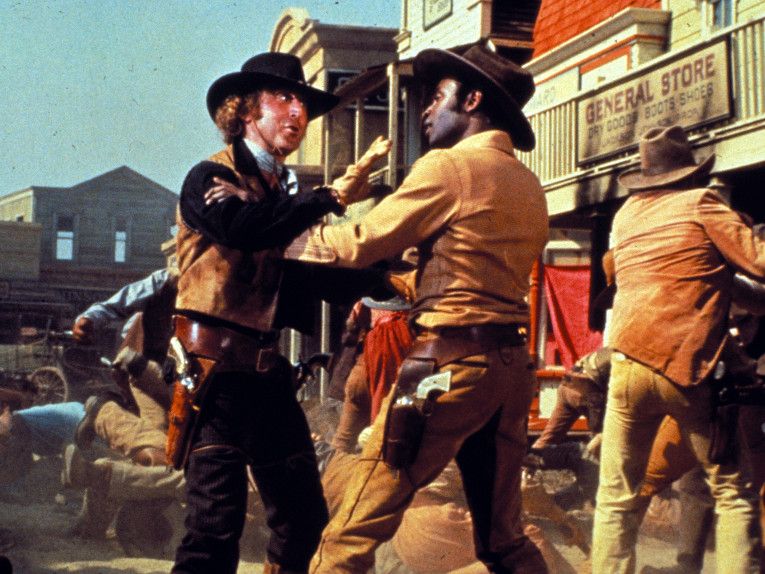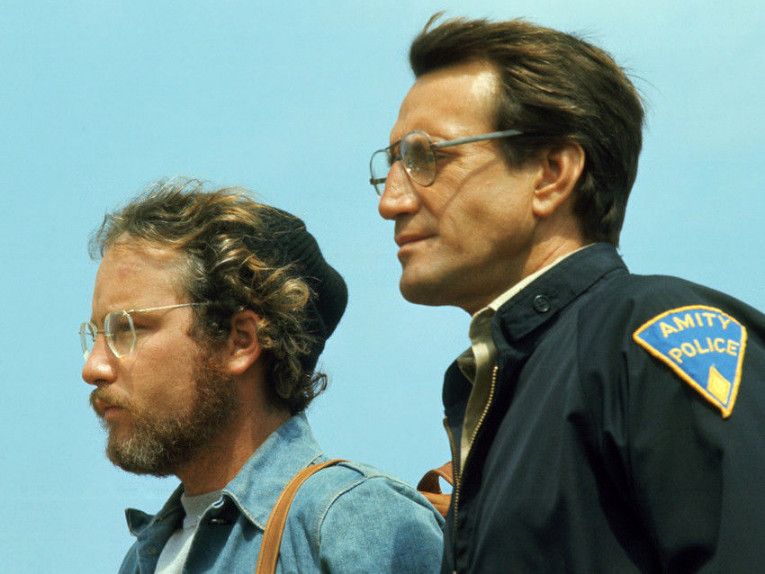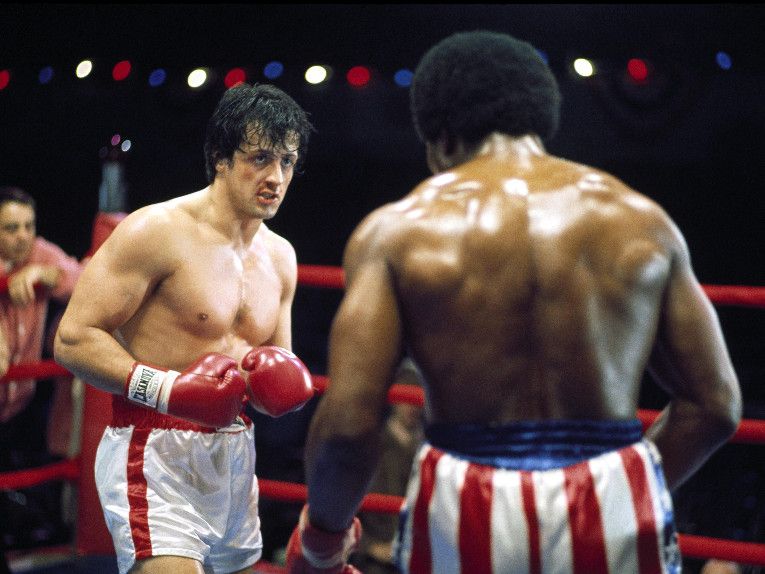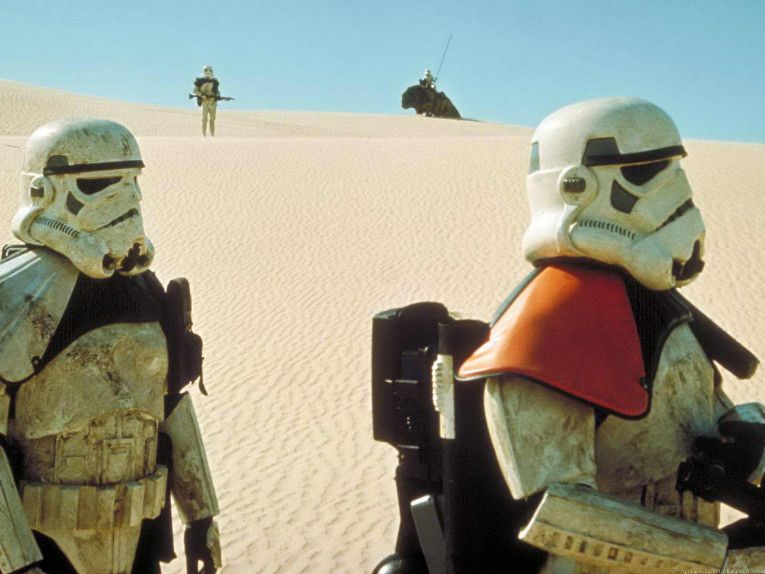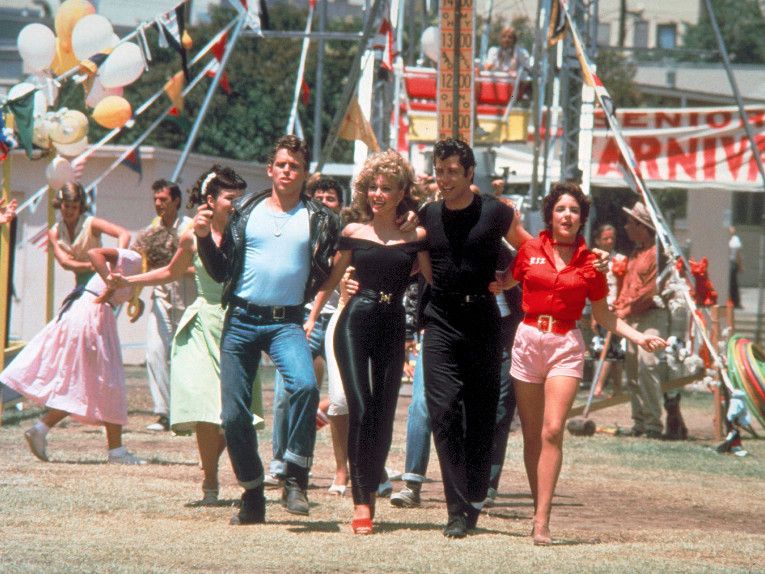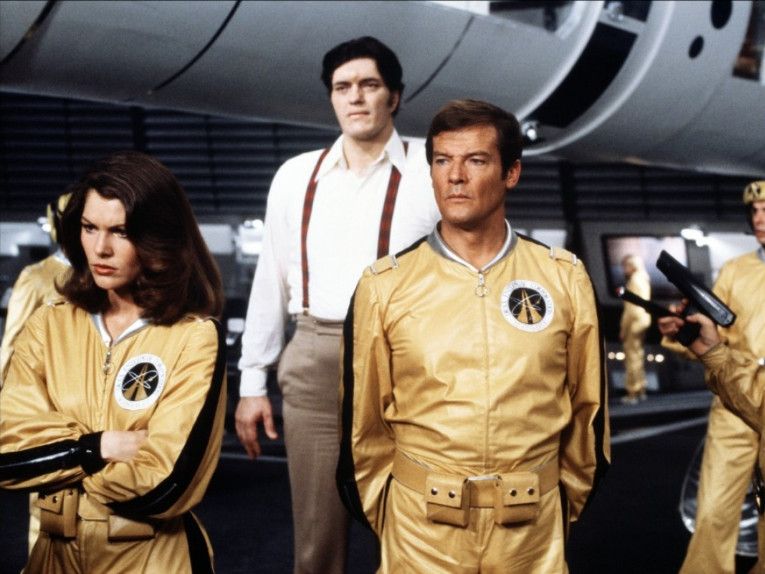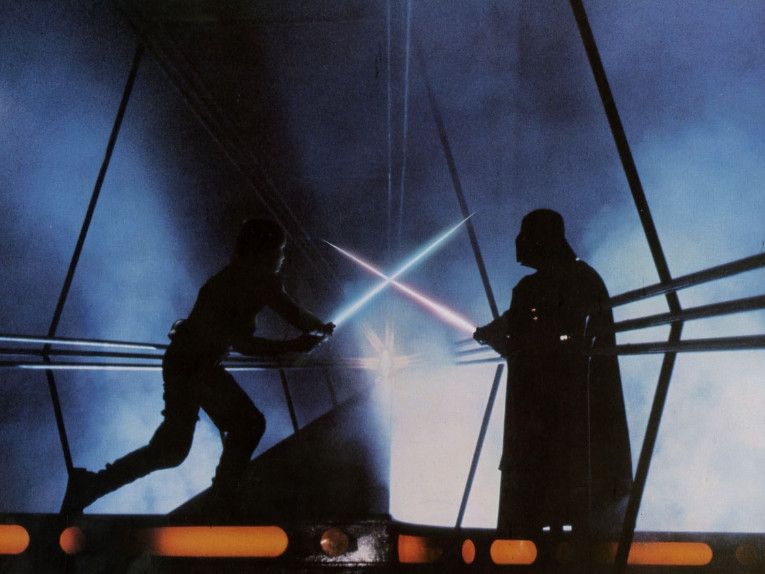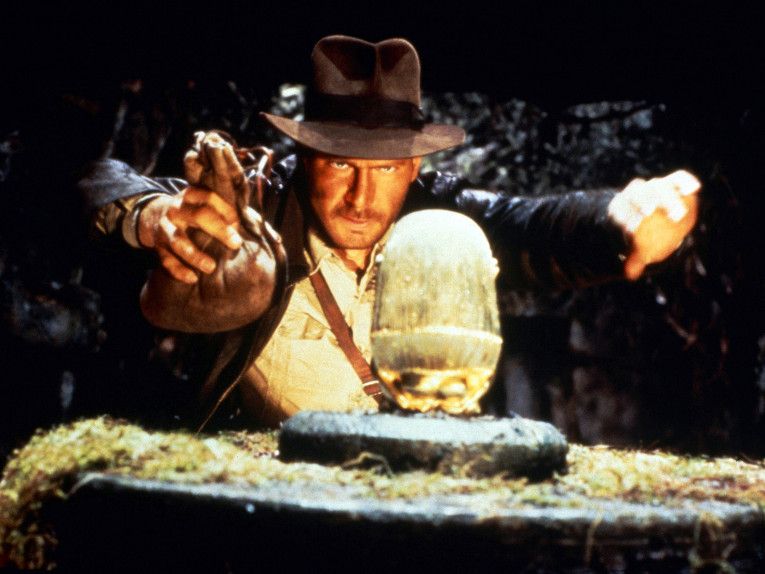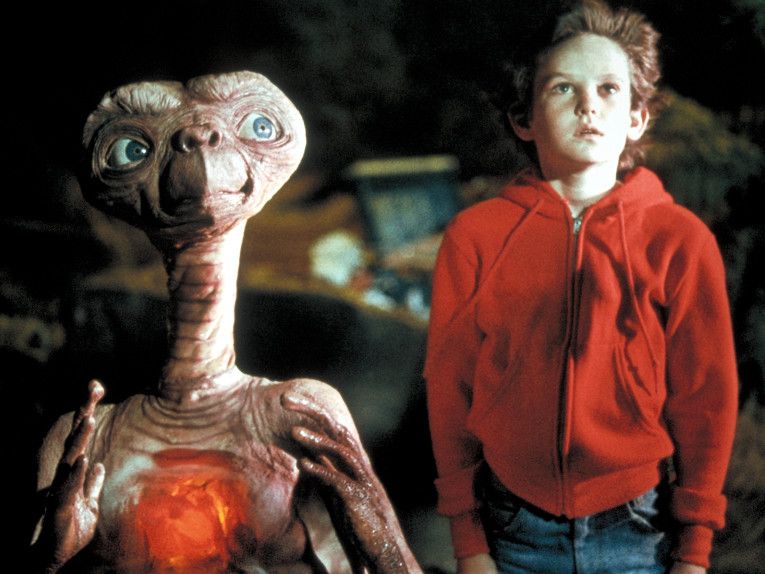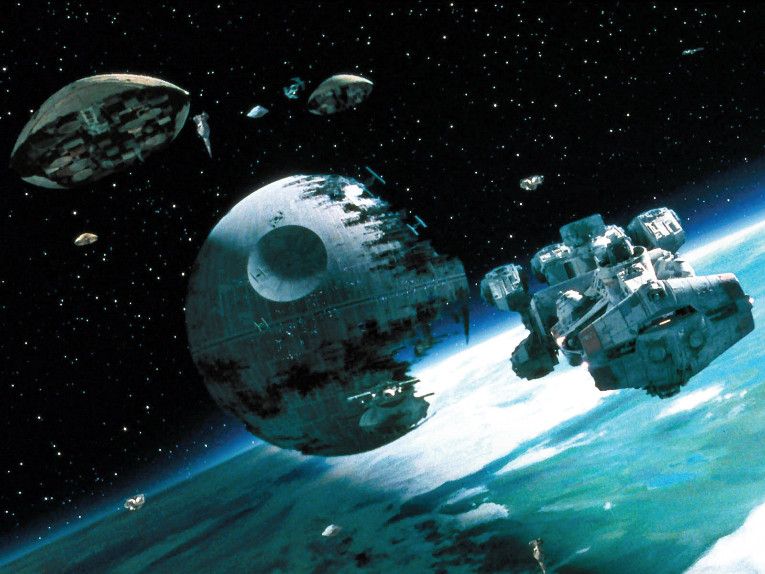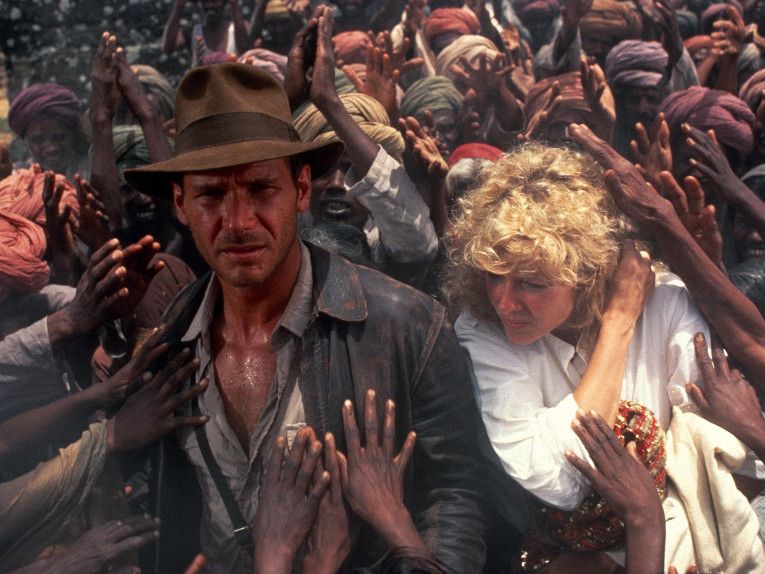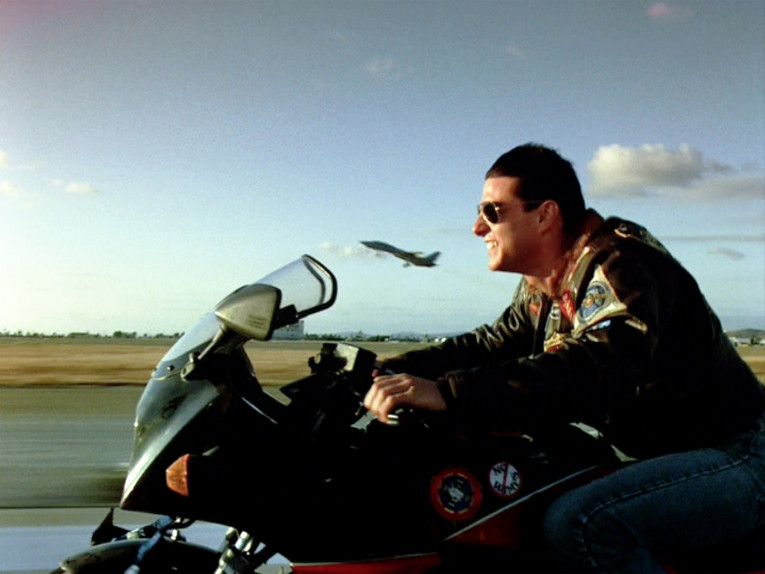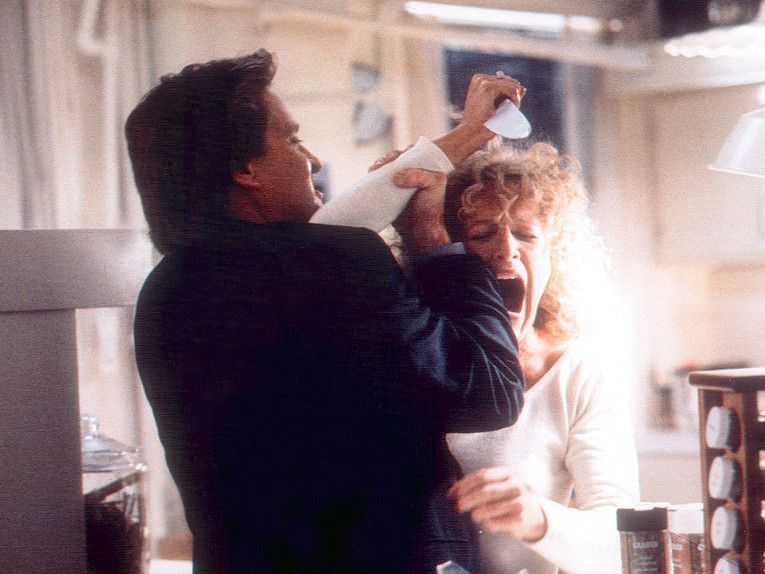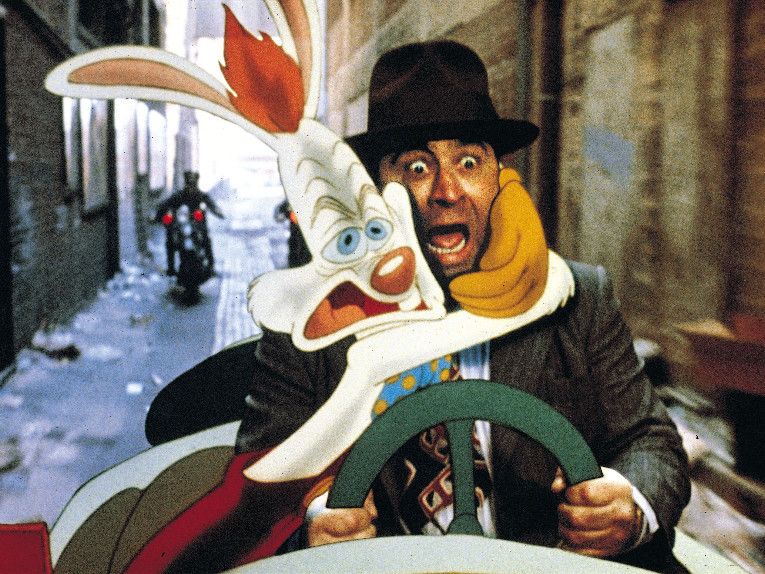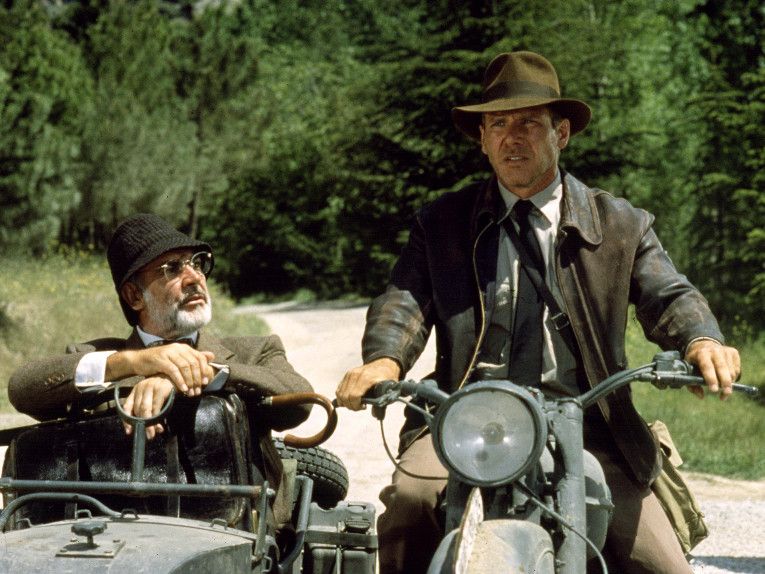A year’s biggest hit movie can tell you a lot about what the world was like back then. Here’s a retrospective on the most profitable films Hollywood gave us, starting in 1960. What was the biggest hit movie the year you were born?
1960 - Swiss Family Robinson
Disney’s family adventure/survival film was a hit, pulling in $40,400,000 in the States. History may not remember it as well as it does two others from that year—Alfred Hitchcock’s Psycho and The Magnificent Seven—but at the time, we all wanted a simple family adventure.
It was a new decade in America. The 1950s saw the Korean War, the Red Scare, and a population increase thanks to the Baby Boomer generation. The start of the ‘60s marked a new era in cinema as well, when Technicolor epics like Swiss Family Robinson played well with audiences.
1961 - 101 Dalmatians
Family entertainment remained all the rage for another year. In fact, 101 Dalmatians ranks twelfth all-time when you adjust for inflation. The movie scored an impressive $153,000,000 in the U.S., more than doubling the haul of 1961's second place finisher, West Side Story.
We may have been in the throes of the Cold War, but when it comes to animated features about cuddly animals and the bad people who want to destroy them, nothing will stop Americans from handing over their money for that sort of silver screen treat.
1962 - Lawrence of Arabia
An epic on the grandest of scales, the adventurous story of T.E. Lawrence proved a hit across the globe. The Peter O’Toole starrer drew a worldwide total of $69,995,385. Not bad for a movie with a staggering three hour and thirty-six minute runtime.
Big as it was, Americans actually preferred The Longest Day that year—the classic John Wayne World War II film (also a long one). But the obvious international appeal of Lawrence of Arabia won out, besting its competition.
1963 - Cleopatra
In a global competition, two movies were most formidable in 1963. Ultimately, audiences preferred another biographical spectacle to the zany, star-studded It’s A Mad Mad Mad Mad World (which is a long, long, long, long movie).
Cleopatra grossed $57,000,000 in the U.S., and $71,000,000 worldwide. The sweeping drama, starring Elizabeth Taylor as the titular Egyptian queen, also cost a fortune to make. The $31 million production, adjusted for inflation, equaled a budget of $225 million in today's money.
1964 - Mary Poppins
Disney did it again in 1964. Fans were able to look past Dick Van Dyke’s infamous “Cockney accent” as they fell in love with the children’s classic musical. The movie grossed $102,272,145 in the U.S. and is still adored today, spawning a 2018 sequel.
You know you’ve got a hit when the next closest competitor, My Fair Lady, falls more than $30-million short. Julie Andrews as a magical singing nanny was a delight for all audiences. No need for a spoonful of sugar to help this one go down.
1965 - The Sound of Music
For the second year in a row, a Julie Andrews musical earned top spot at the box office. And this one was a hit all around the world, raking in a total sum of $286,214,286. The opening Alps sequence remains one of the most recognizable in film history.
It was still a time of the grand scale epic. Doctor Zhivago also put up massive numbers that year. But audiences were seeking experiences for the whole family and, apparently, ones you could also sing along to. Sorry, Thunderball.
1966 - The Bible: In the Beginning…
1966 saw a drop in numbers. Movies made nearly $200-million less than they did the year prior. While star power drove Who’s Afraid of Virginia Woolf (Elizabeth Taylor) and The Sand Pebbles (Steve McQueen), the top selling book of all time had greater appeal. The Bible: In The Beginning generated $34,900,023 in the U.S.
Though it only covers about half of the book of Genesis - from creation to Abraham - it was enough to sell more tickets than any other movie that year. Whether it’s director John Huston or Mel Gibson putting the Scriptures in front of the camera, the masses always seem to show up in droves.
1967 - The Graduate
By 1967, anti-heroes and villains were capturing our collective attention. Movies like Bonnie and Clyde, Cool Hand Luke and The Dirty Dozen were released that year. But none of them drew as many eyeballs as The Graduate.
The controversial and salacious film starring Dustin Hoffman and Anne Bancroft as the older seductress luring him away from her daughter, made $104,397,102 domestically. And thanks to Simon & Garfunkel, it also boasts a soundtrack as integral to the movie as any has ever been.
1968 - 2001: A Space Odyssey
Though it confounded audiences, Stanley Kubrick’s 2001: A Space Odyssey was the biggest hit of 1968. Never had anyone seen space exploration quite like this before. Between its stunning effects and a haunting score, this tale of humanity's watershed achievements was truly ahead of its time.
In a year that gave us other greats like Planet of the Apes and Rosemary’s Baby, Kubrick’s sci-fi masterstroke had a different kind of wow factor. It pulled in a monolithic $71,928,046 around the world. Remarkably, its visual effects hold up to this day.
1969 - Butch Cassidy and the Sundance Kid
It was a year of rebellion as the 1960s came to a close. We were treated to controversial buddy films like Midnight Cowboy and Easy Rider. As counterculture grew in popularity among America's youth, our favorite movie of 1969 was a western buddy romp with a pair of legends in the title roles.
Grossing $102,308,900 domestically, the Paul Newman/Robert Redford (somewhat) true story also impressed critics and the Academy—even that “Raindrops Keep Fallin’ On My Head” sequence! It was nominated for Best Picture, and William Goldman took home the Best Original Screenplay honor.
1970 - Love Story
Four war movies made the top ten in 1970. M*A*S*H, Catch-22 - both war comedies - Patton and Tora! Tora! Tora! all performed well at the box office. Though Patton took home the big awards at the Oscars, the public proved they like a good romance best of all.
Love Story starred Ali MacGraw and Ryan O’Neal as a couple from opposite sides of the tracks - she from a blue collar family, he from wealth. It was a smash hit, pulling in $106,397,186 in the U.S., and $136,397,186 globally. Not bad for a budget of just over $2 million.
1971 - Billy Jack
The James Bond flick Diamonds Are Forever may have made more money than any other film released in 1971. However, its December release resulted in most of those tickets being sold the following year. The French Connection and A Clockwork Orange are better remembered, yet not even they couldn’t earn the top spot.
Billy Jack, of all movies, was the king of 1971's box office. The story of a mixed-race ex-Green Beret martial artist kicking butt and rescuing horses, took home $98,000,000 in the U.S. Tom Laughlin may not be the star that Sean Connery is, but he hit - or kicked - at just the right time.
1972 - The Godfather
It’s at the very top of many lists of the greatest films of all time. And in 1972, no movie around the world made more money than The Godfather. Directed by Francis Ford Coppola, the beginning of the New York crime family saga sees the once reluctant Michael Corleone (Al Pacino) ascend to the top.
Grossing $133,698,921 in the U.S. and $268,500,000 worldwide, the movie ignited Al Pacino’s career and won Marlon Brando his second Oscar, though he refused to accept it in protest. As great as it is, some film critics believe it was bested in 1974 by its sequel!
1973 - The Exorcist
Not even Redford and Newman - together again for The Sting - could beat this colossal scare fest, the likes of which no one had ever seen. If Rosemary’s Baby was an indication that audiences welcomed a trend toward the demonic, director William Friedkin paid attention.
The Exorcist, the story of a possessed young girl (played by 13-year-old Linda Blair) and the priests who attempt to cast the demon out, made an astounding $428,214,478 around the world. A new brand of horror had arrived, and it would be here to stay.
1974 - Blazing Saddles
Maybe we needed a little bit of a breather after the terrors unleashed in 1973. Because this year, Mel Brooks’s western farce earned more American dollars than any other film. The movie lassoed in $119,500,000, edging out disaster flick The Towering Inferno.
The hysterically funny tale of the first black sheriff in the old west was not Brooks’s only hit that year. In December, he cracked us up with Young Frankenstein, which came in fourth place at the box office for 1974. Between Vietnam and Watergate, we needed some laughs.
1975 - Jaws
Considered the first summer blockbuster, Steven Spielberg’s Jaws scared audiences away from the ocean in 1975. It also had them lining up around the block to buy tickets. Generating a remarkable $260,000,000 domestically and $470,700,000 worldwide, it wasn’t much of a competition by year’s end.
Whether it was a lonely swimmer pulled under by an unseen monster of the deep, or the spine-tingling story of the U.S.S. Indianapolis as told by Robert Shaw’s Quint, audiences couldn’t get enough. Summertime had become the season of the event movie.
1976 - Rocky
As the story goes, Sylvester Stallone insisted on playing the title role of his own script, which he wrote over the course of three and a half days. Studios wanted a big star for such a part, not an unknown. But can you imagine anyone else stepping into the ring?
Rocky achieved $117,235,147 in the U.S. and $225,000,000 globally. It won Best Picture at the Oscars and led to seven sequels, if you count the two Creed movies. Good thing they didn’t go with their original plan and cast James Caan or Ryan O’Neal.
1977 - Star Wars Ep. IV: A New Hope
If ever a movie transcended mere entertainment, it was George Lucas’s mega smash hit, Star Wars. It was a cultural phenomenon, a game changer across the cinematic landscape, a merchandise giant. The iconic characters. The soaring score. The lightsaber battles. What American kid over the past forty years isn’t familiar with them?
But it wasn’t just an American success. Raking in $460,998,007 domestically, Star Wars totaled $786,598,007 around the world. A space fantasy that even some cast members didn’t quite get at the time, fans can now rest assured: this franchise will never die.
1978 - Grease
It’s hard to find a trend when examining the most popular movies of the 1970s. We had adventure films, dramas, horror films, and even a comedy winning the box office year to year. Then 1978 came along, and a musical won the box office. Not even Superman could fly higher!
The John Travolta/Olivia Newton-John starrer bested all others that year, with a domestic gross of $159,978,870, and a $387,510,179 worldwide total since then. Maybe the silly romance didn’t do it for you, but if one of those songs pops into your head, it’s not going away for a while.
1979 - Moonraker
The end of the 1970s gave us some classics. Alien made space travel more terrifying than ever. Apocalypse Now reminded us of the horrors of war. Kramer vs. Kramer delved into the reality of domestic disputes. We even saw Star Trek finally make it to the big screen.
But no movie made more money in 1979 than Moonraker, a Roger Moore-as-James-Bond thriller about a hijacked spaceship. Totaling $210,308,099 around the world, 007 came out on top like he always does. And thus, a decade of memorable movies came to a close.
1980 - Star Wars Ep. V: The Empire Strikes Back
The Star Wars craze was far from over. And as a new decade began, The Empire Strikes Back sure proved that. Considered by many fans and critics to be the best of the series, the second installment generated $290,271,960 in the U.S., and $534,161,334 in all.
With a bigger budget this time around, the saga moved in a new direction, further upping the stakes. It continued the journey of self discovery for protagonist Luke Skywalker, capturing our imaginations and leaving us hanging (almost literally), awaiting a grand finale.
1981 - Raiders of the Lost Ark
Two years earlier, his 1941 was a dud with critics and fans alike. But in 1981, Steven Spielberg came back with a vengeance. Introducing the world to Indiana Jones, Spielberg’s action-adventure serial about an archaeologist battling Nazis for the Biblical Ark of the Covenant was a huge hit.
Whipping up a domestic total of $225,686,079 and $367,452,079 around the globe, the movie easily earned the top spot that year. It kicked off a terrific decade for Spielberg that saw his films epitomize how we remember 1980s cinema.
1982 - E.T. The Extra-Terrestrial
The biggest hit of the 1980s was not a Star Wars movie, but its character did come from someplace far, far away. E.T. The Extra-Terrestrial had mass appeal, generating $792,965,326 worldwide. It also marked the second year in a row that Steven Spielberg came out on top.
The story of a young boy in need of a friend, and the stranded space alien he harbors in his home, touched moviegoers of all ages. And it holds up all these years later. Go ahead, watch it again. You’ll love it, and your kids will, too.
1983 - Star Wars Ep. VI: Return of the Jedi
Three Star Wars movies, three box office champions. 1983 saw the end of the saga, or so we thought. Luke defeats the emperor, Darth Vader finds his heart, Ewoks run amok, and the beloved characters celebrate their victory. The epic trilogy was complete.
The third installment scored $309,205,079 at home and a grand total of $572,705,079. Star Wars was more popular than ever. But fans were forced to wait a grueling sixteen years for a new episode. When it came along - followed by its sequels - nearly everyone agreed that the originals would forever reign supreme.
1984 - Indiana Jones and the Temple of Doom
The ‘80s were in full swing now. By 1984, we had teen movies, gross out comedies, and scientists fighting ghosts! Ghostbusters, by the way, was the top earner in America. But once again, Spielberg ruled the world.
Indiana Jones and the Temple of Doom saw the titular character, played by Harrison Ford, journey to India in order to retrieve sacred Sankara stones. With a worldwide gross of $333,080,271, Spielberg proved that even his darker stuff could sell more tickets than anything else.
1985 - Back to the Future
Is there a more fun movie of the 1980s than this one? Considered by some to be among the most perfect screenplays ever written, Back to the Future introduced the world to Marty McFly and the familial horrors of time travel.
The movie made $212,259,762 in the U.S., and a total of $385,524,784. It’s got everything we could ask for in a blockbuster film, anchored by a high stakes plot. Imagine facing non-existence if you couldn’t get your parents to kiss thirty years in the past!
1986 - Top Gun
Tom Cruise was already a star, but Top Gun took him to the next level. It’s got Iceman, Goose and, of course, Cruise’s Maverick, as elite Navy fighter pilots. With its thrilling cinematography and memorable score, director Tony Scott had a hit on his hands.
With a sequel finally on the way in 2020, the original generated $356,799,634 around the globe. A surprising runner up that year was Crocodile Dundee, which pulled in an impressive $328,203,506. That film earned a sequel just two years later. It took Cruise and company thirty-four years!
1987 - Fatal Attraction
Eddie Murphy’s Beverly Hills Cop may have been number one in the U.S., but globally, this erotic thriller took the prize. Starring Michael Douglas and Glenn Close in a story about a one-night-stand turned deadly, audiences were taken in by the suspense.
Fatal Attraction totaled a worldwide gross of $320,100,000. It was a strong year for Douglas, who won an Academy Award for his turn as Gordon Gecko in Wall Street three months later. His characters sure had a rough go of it. But, it's probably better to be hunted by the Feds than a murderous lover.
1988 - Who Framed Roger Rabbit
Visual effects took center stage in 1988. Before CGI (computer generated imagery) became the norm, animated characters had to be drawn the old fashioned way. And we’d never seen it done like in the satirically noir-ish Who Framed Roger Rabbit.
Directed by Robert Zemeckis, the movie seamlessly blended live action with animation, as cartoon characters live among flesh-and-blood humans - and even get embroiled in a murder mystery! The film killed with audiences as well, making $154,112,492 in the U.S. and a whopping $351,500,000 worldwide.
1989 - Indiana Jones and the Last Crusade
Who better to round out the decade than Steven Spielberg? Though his third installment of the Indiana Jones franchise couldn’t beat Tim Burton’s Batman in the U.S., it earned $474,171,806 around the world. If you’re scoring at home, that’s four times in ten years that Spielberg came out victorious, and six if you count Who Framed Roger Rabbit? and Back to the Future (of which Spielberg was a producer).
Indy reigned supreme in the final year of the 1980s, finding the cup of Christ and riding off into the sunset - literally! It was the perfect ending to what we believed to be a trilogy at the time, and a suitable lasting image to a decade of indelible movies.

